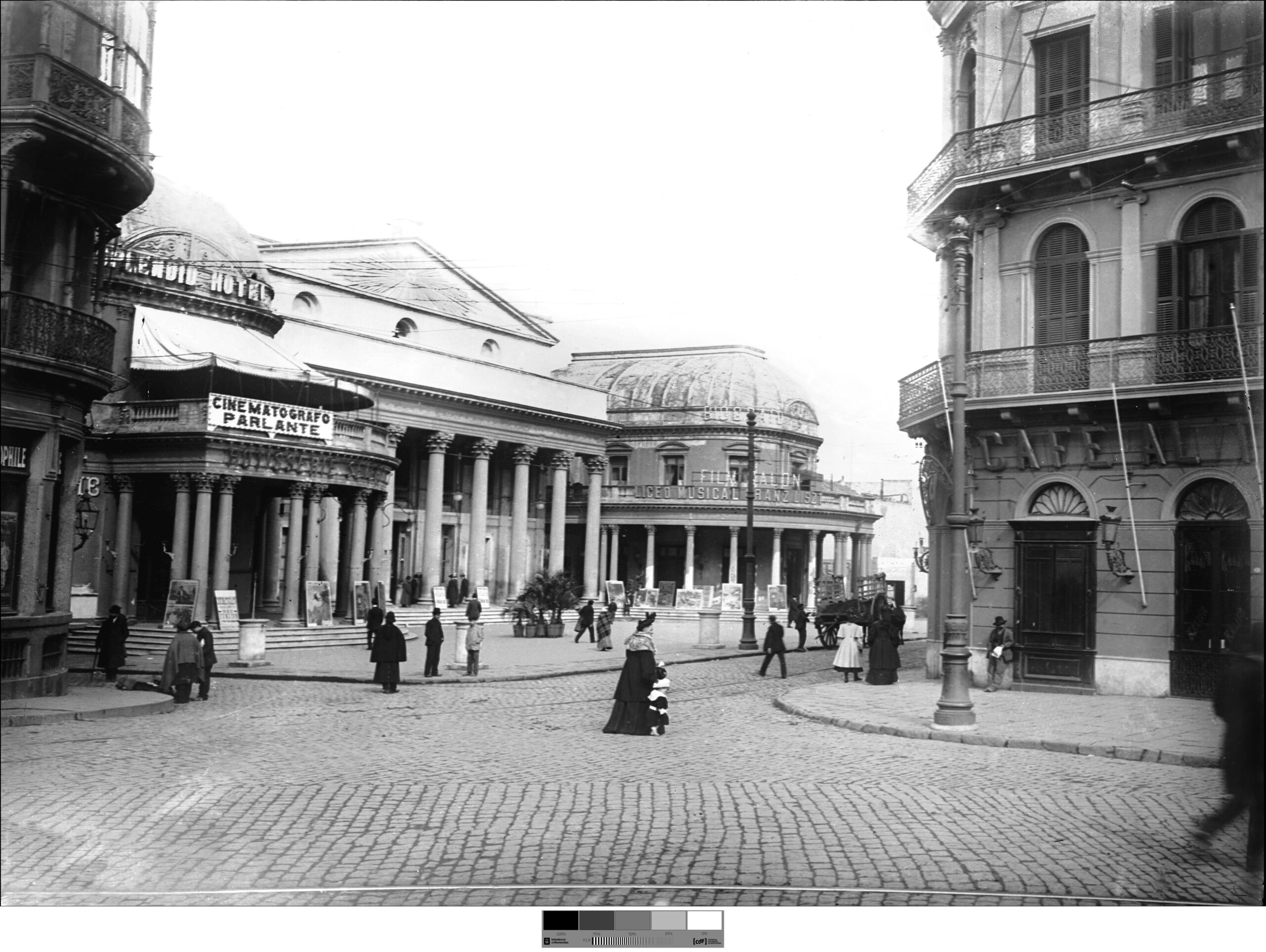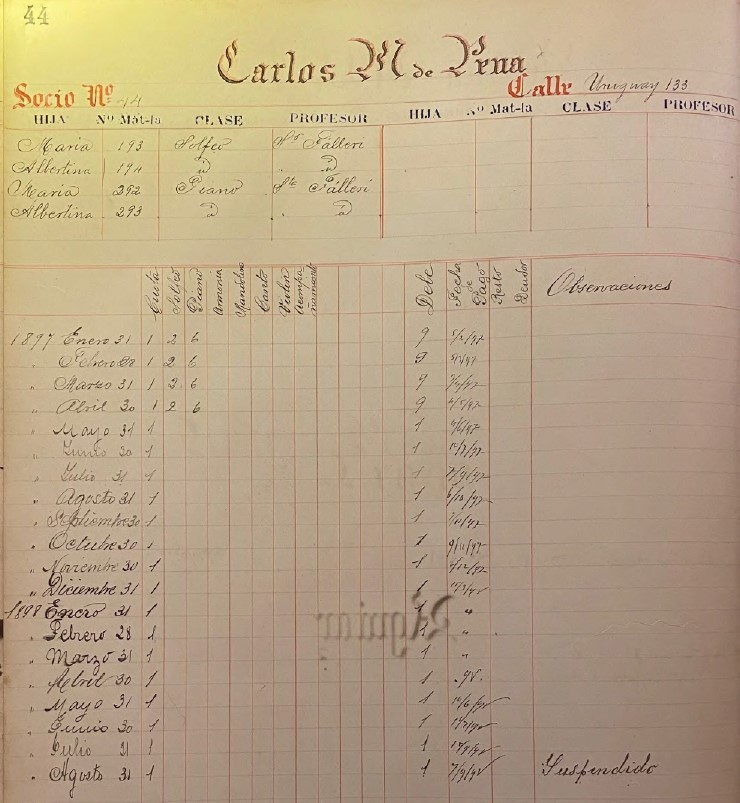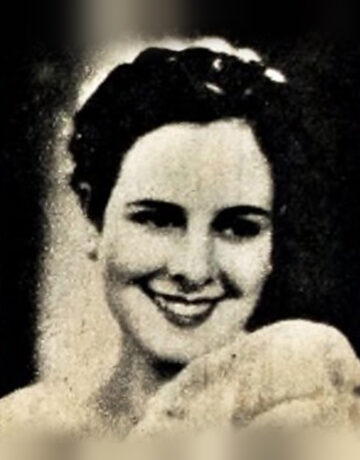Nahyr Pantano Hernández was a Brazilian pianist who developed most of her artistic career in Uruguay.
Franz Liszt Conservatory of Music
The Franz Liszt Conservatory of Music was founded in 1895 by Camilo Giucci and Luisa Gallo. Camilo arrived in Montevideo in 1885, as part of a concert tour. At one of these concerts, he met Luisa, and they married that same year. Towards the end of the 19th century, some music instruction centers were founded in Montevideo. This was the first step toward consolidating a music education system, led by private conservatories and directed by prominent figures in the music world. Thus, in 1873, the Musical Society was founded, which in 1875 was named Sociedad Musical “La Lira” (La Lira Musical Society). In 1890 the Instituto Verdi was founded, which was directed by the brothers Francesco and Luigi Sambucetti. Meanwhile, in the public sphere, in 1879 the Escuela Nacional de Artes y Oficios (National School of Arts and Crafts) was founded, which included music courses.
The first headquarters of the Franz Liszt Conservatory of Music was located in the west wing of the Teatro Solís. After Camilo (father) passed away in 1913, it was moved to a building located at 1476 Treinta y Tres Street, where it stayed for a short time. Subsequently, it was moved to a building across the street at 1479 Treinta y Tres Street, where it remained until the 1970s.
In parallel with its founding, the Conservatory of Music began publishing a magazine announcing its latest news. In the first issue of this publication, Camilo explained the process that led him to make the decision to found the Conservatory of Music as follows:
This fragment shows the recognition of the other existing centers, as well as the conviction of the importance of the musical audience in Montevideo. It should be noted that the name of the Conservatory is a tribute to the Hungarian pianist and composer Franz Liszt, who had been Camilo’s teacher since his youth. In this regard, many articles dedicated to Liszt’s life and work were published in the Conservatory’s magazine.
On June 28, 1895, the opening concert of the Conservatory was held, with the participation of violinist Pedro Melani and harpist Félix Lebano. As recorded in issue 4-5 of the Conservatory’s publication, the concert was very well received by the local press.
From its beginnings, the Conservatory’s classes and courses have enjoyed great public support in Montevideo. In this sense, in 1897 the Conservatory had a student registry book, in which several hundred students who attended piano, violin, music theory and singing classes, among others, were registered. The main audience of the Conservatory was young people, mostly women, belonging to the middle and upper classes. From these early days, the Conservatory had outstanding students, who later developed important musical careers. For example, we must highlight the composer César Cortinas, who was a disciple of Camilo Giucci, the composer Luis Pedro Mondino and the pianist Raúl Gandolfo. As for violin students, Beatriz Tusset, Israel Chorberg, and Argentinian students Edgardo Donato and Emilio Pellejero stood out, among others. For their part, Pedro Vittone and Isaías Savio stood out on guitar.
In parallel to his classes at the Conservatory, Camilo created the Sociedad Coral Santa Cecilia, comprised of “young ladies” and dedicated to religious music. Among the objectives of Camilo, there was the “development of the voice that will result from vocalizations and choral music theory,” the “training of a musical ear through the valuable exercise of sight-reading compositions for two and three voices,” and, finally, the “good and faithful interpretation of sacred music.” This choir functioned at least until the early years of the 20th century, performing in various concerts in churches and religious centers.
In this first stage, the Conservatory stood out in the organization of concerts. Through his connection with Camilo, he was able to arrange visits from foreign musicians, such as the Portuguese pianist José Vianna da Motta, the Portuguese violinist Bernardo Moreira de Sá, and the Spanish violinist Andrés Gaos. In addition, since the beginning of the century, the children of Camilo and Luisa, who were taking their first steps in their musical careers, began to perform in concerts at the Conservatory.
In addition to the strictly musical aspect, the Conservatory became a benchmark in the Uruguayan cultural environment. Conferences devoted to literary themes were organized, such as the conference on the work of the humanist poet Francesco Petrarca held in 1904. Along the same lines, in 1908 a biographer’s room was inaugurated at the Conservatory, which allowed the reproduction of films from the early silent cinema era. Thus, the activity of the Conservatory was not restricted to music, functioning as a space of sociability and support for cultural expressions of different types.
After Camilo Giucci passed away in December 1913, his eldest son, Camilo, took over the management of the Conservatory until he passed away in 1973. During Camilo Jr.’s leadership, the Conservatory continued to carry out its fundamental objectives and functions. However, there were some nuances that should be noted.
In this regard, the creation of new offices in the interior of the country should be highlighted. Thus, branches of the Conservatory were created in San José, Lavalleja, Maldonado, Salto, Trinidad, Santa Lucía and Santa Rosa. On the other hand, starting in the 1940s, the Conservatory had to coexist with the creation of a public music education system. In 1942, the National Conservatory of Music was founded under the auspices of SODRE, but experienced significant operational problems for more than a decade. In 1954, the National Conservatory was founded again, this time as a branch of the Ministry of Public Instruction. Despite these developments, the Conservatory continued to attract a significant number of students. The teaching staff was led by Camilo, and also included other members of the family, such as Esther, Luisa and Carlos, as well as Luisa Gallo, who continued her piano lessons until shortly before her passing in 1945. At the same time, new teachers were introduced on a permanent or temporary basis. For example, in 1952 the Austrian composer and choir conductor Kurt Pahlen gave a series of courses at the Conservatory.
During the 1940s and 1950s, the Conservatory became very important in the promotion of cultural activities of various kinds related to cultured music. Thus, it continued to pay special attention to classical authors, and concerts dedicated to the works of Ludwig van Beethoven, Johann Sebastian Bach and Felix Mendelssohn were organized. In addition, concerts and events dedicated to contemporary composers, such as the Argentine Alberto Soriano, and to the work of Uruguayan composers, were added. On the other hand, cultural cycles dedicated to specific themes were organized annually, which included a musical part. For example, events were held on topics as diverse as Balkan and Basque folklore and Chilean music.
After Camilo passed away in January 1973, Luisa Giucci took over the management of the Conservatory for a few months, until her passing in December of that same year. From that moment on, Esther Gucci took over the management. In December 1974, the Museo Histórico Nacional acquired part of the period furniture, as well as documentation and various objects that belonged to the Conservatory, and added them to its collection. In 1995, Esther transferred the rights of the Conservatory to pianist and teacher Julio César Huertas.
The Giucci Family
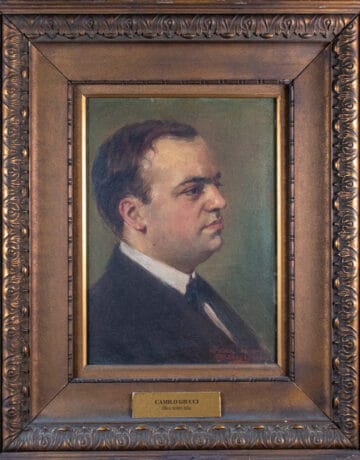
Camilo Giucci (son)
Camilo Giucci Gallo was a Uruguayan violinist and teacher.
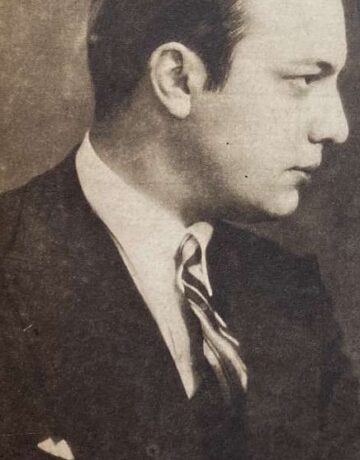
Carlos Giucci
Carlos Giucci was a Uruguayan pianist and composer.

